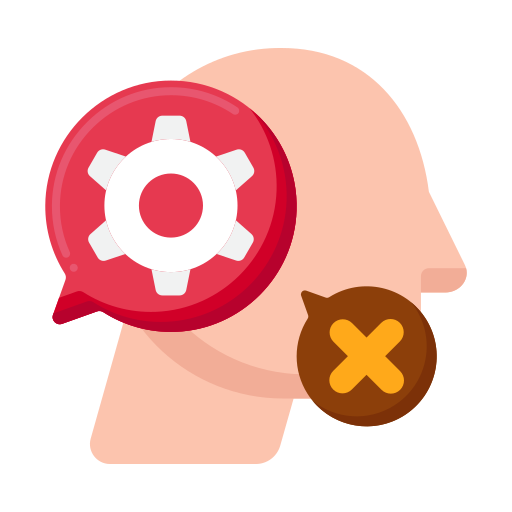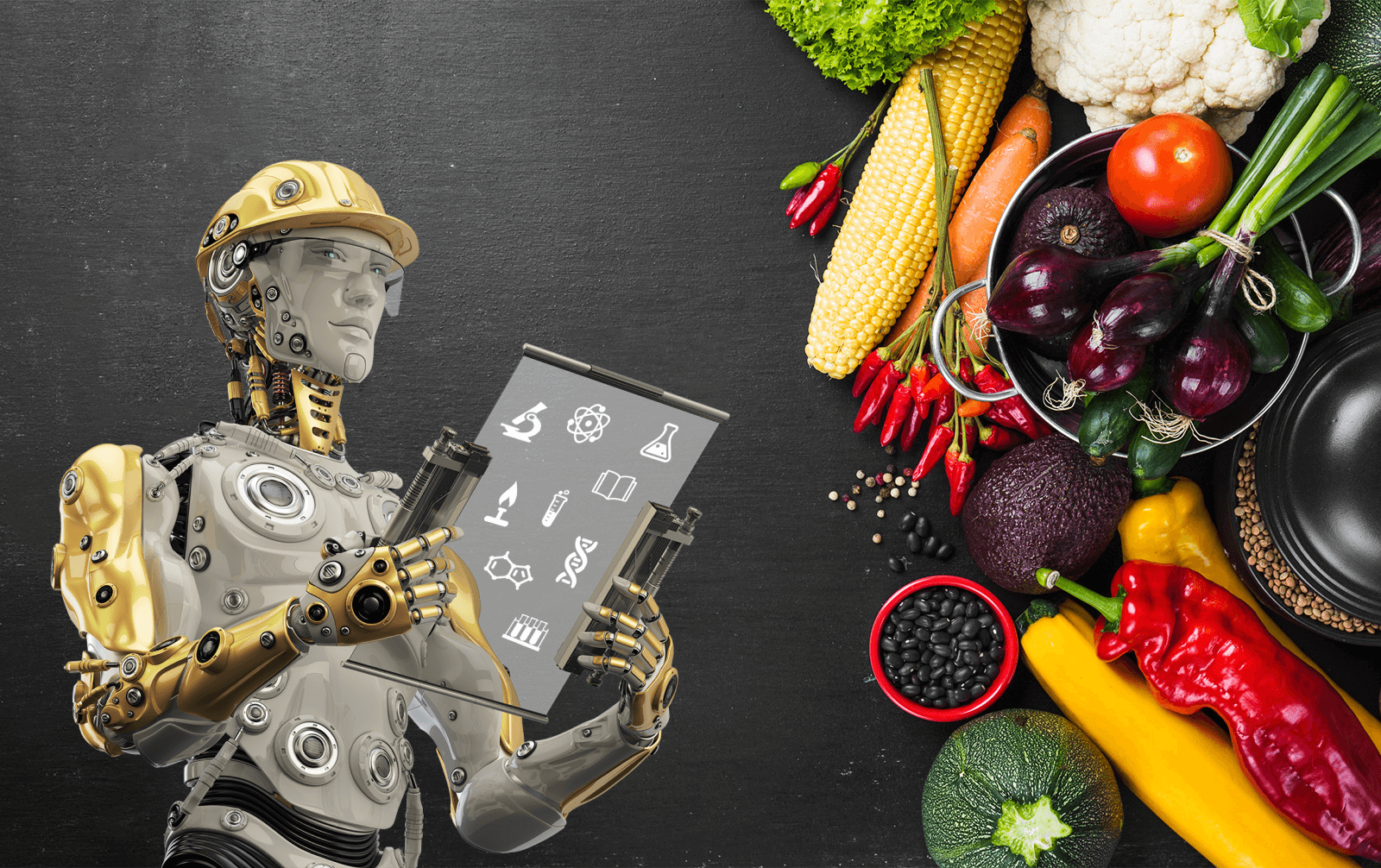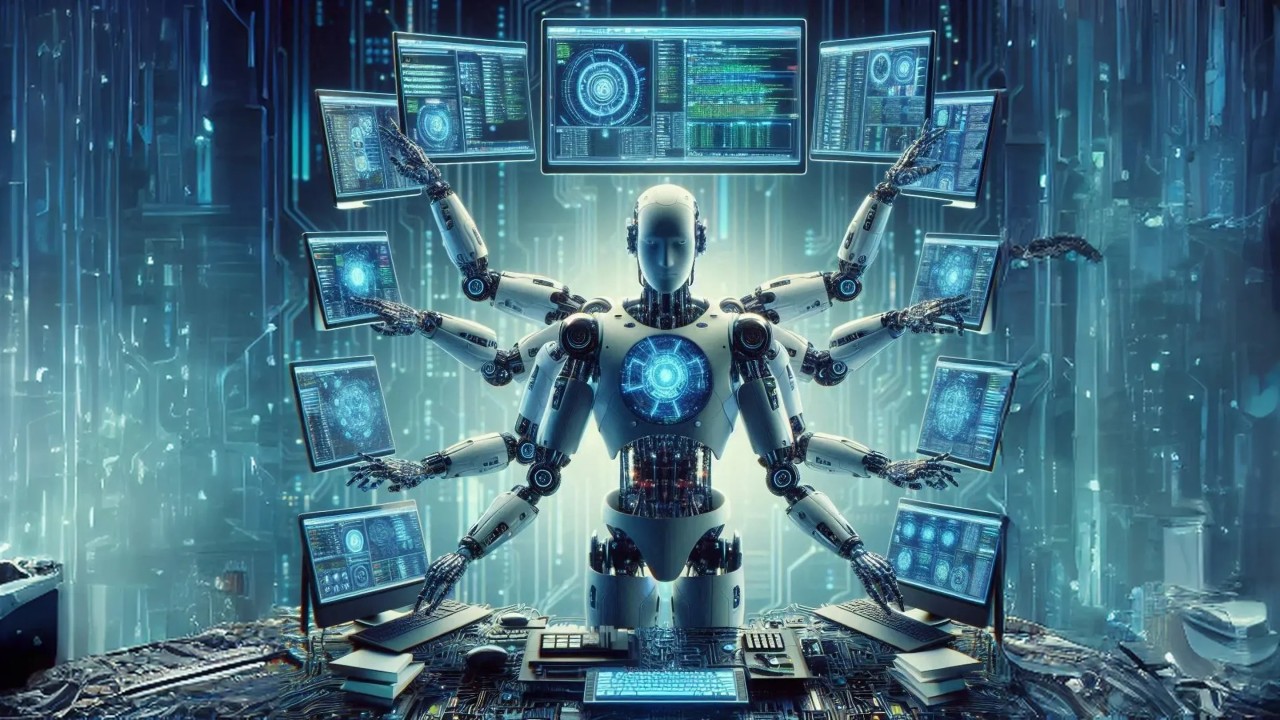Artificial intelligence (AI) is revolutionizing the food delivery landscape, ushering in an era of fresher food delivered faster than ever before. This article dives into the exciting world of AI-powered food deliveries, exploring how intelligent algorithms are optimizing every stage of the journey, from streamlining routes to prioritizing freshness.
Smarter Routing for Speedier Deliveries:
Real-time Traffic Analysis: Traditional navigation tools often fall short when it comes to accounting for dynamic traffic conditions. AI algorithms, however, are constantly ingesting and analyzing real-time traffic data.
Weather on the Go: Let's face it, a scorching summer day isn't ideal for ice cream delivery. AI takes weather patterns into account when calculating routes. This not only helps maintain optimal temperatures for hot or cold food, but can also adjust routes to avoid areas experiencing particularly harsh weather conditions, like heavy rain or snow, that could further delay deliveries.
Distance Isn't Everything: AI goes beyond simply choosing the shortest distance between two points. It factors in factors like traffic light patterns, road closures, and even turn restrictions. This comprehensive analysis allows the algorithm to identify the most efficient route, even if it's slightly longer in distance but significantly faster in travel time.
Multiple Deliveries, Optimized Routes: AI doesn't just work for single deliveries. It excels at optimizing routes for drivers carrying multiple orders. The algorithm factors in the location of each order, their temperature requirements, and even the estimated preparation times at restaurants. This ensures deliveries are grouped efficiently, minimizing overall travel time and maximizing the freshness of all the food on board.
Matching the Right Rider with the Right Order:
The rider is the final link between a restaurant's delicious creation and your rumbling stomach. But not all riders are created equal, and just like food pairings, matching the right rider with the right order is crucial for ensuring a smooth and successful delivery experience.
Understanding Rider Performance: AI analyzes a wealth of data related to a rider's past performance. This includes factors like delivery times, adherence to traffic rules, customer satisfaction ratings, and even the types of food they've handled previously. By analyzing these metrics, AI can identify riders with a proven track record of speed, efficiency, and careful handling – essential qualities for delivering delicate dishes or temperature-sensitive orders.
Location, Location, Location: AI doesn't stop at just rider performance. It also factors in the rider's current location relative to the restaurant and your delivery address. This ensures that orders are assigned to riders closest to the restaurants, minimizing the time it takes for them to pick up the food. Additionally, AI considers the rider's familiarity with the delivery area. Matching riders who know the local roads well can significantly improve delivery times, especially in areas with complex traffic patterns.
Order Specificity for Specialized Care: Not all food is created equal. A steaming hot pizza requires different handling than a delicate sushi platter. AI can identify the type of food being ordered and match the order with riders who have experience handling similar items. For example, a rider known for their efficient hot food deliveries might be prioritized for that piping hot pizza, while a rider known for careful handling might be assigned the sushi.
Specialization for Special Diets: With the rise of dietary restrictions, AI is starting to factor in a rider's awareness of special food handling protocols. Riders who have completed training on handling food for allergies or specific diets might be prioritized for orders with such requirements. This extra layer of care ensures that specialized dietary needs are met and food arrives safely and untampered with.
The Rider-Restaurant Connection: AI can also facilitate a more streamlined communication flow between riders and restaurants. By analyzing rider location and order details, AI can predict potential delays at restaurants with high order volumes. This allows riders to proactively communicate potential wait times to customers, ensuring a smoother experience for everyone involved.
By utilizing AI for intelligent rider matching, food delivery platforms are creating a win-win situation. Riders with the right skillsets are assigned the most suitable orders, leading to higher efficiency and more satisfied customers. Ultimately, this results in fresher food arriving at your doorstep faster, making your next culinary adventure an even more delightful experience.
Predicting Demand for Peak Performance:
Historical Hunger Pangs: AI algorithms are data hungry, and in the realm of food delivery, historical data is king. The algorithm devours information on past order patterns, including order volume, time of day, day of the week, weather conditions, and even special events happening in your area. By analyzing these trends, AI can identify recurring peak periods – those evenings when everyone seems to crave burgers or those rainy Sundays perfect for a steaming bowl of comfort food.
Seasonal Shifts in Appetite: AI takes seasonality into account. Summer evenings might see a surge in ice cream orders, while winter weekends might see a spike in hot chocolate deliveries. By factoring in seasonal trends, AI can predict these fluctuations in demand, allowing restaurants to pre-stock ingredients and platforms to allocate more riders during peak times.
Location Matters: A Hyperlocal Approach: Food preferences and ordering habits can vary greatly between neighborhoods. AI understands this. It can analyze order data at a hyperlocal level, identifying specific areas that experience surges in demand for certain types of food at particular times. This granular prediction allows restaurants to tailor their preparations and platforms to optimize rider allocation in these specific areas.
Promotional Savvy: AI can anticipate the surge in orders and alert restaurants to prepare accordingly. This ensures a smooth experience for customers and prevents frustrating delays during promotional periods.
The Power of Proactive Planning: Armed with AI's demand predictions, restaurants can proactively manage their inventory. They can ensure they have enough ingredients on hand to meet the expected demand during peak periods. This reduces the risk of stockouts that could lead to order cancellations and unhappy customers. Additionally, platforms can use this information to pre-schedule more riders during anticipated peak hours, ensuring there are enough couriers to deliver all the orders efficiently.
By predicting demand for peak performance, AI is transforming the food delivery landscape. Restaurants can operate more efficiently, minimizing waste and maximizing profit. Platforms can ensure a smoother experience for both riders and customers.
Intelligent Temperature Control for Optimal Conditions:
Smarter Bags for a Cooler Future: AI is driving the development of next-generation delivery containers equipped with intelligent temperature control systems. These high-tech bags can be programmed to maintain specific temperatures, be it keeping pizzas piping hot or ensuring salads stay crisp and cool.
Adaptive Heating and Cooling: AI algorithms can analyze order details, such as the type and quantity of food, and adjust the internal temperature accordingly. For example, a bag carrying a hot pizza and a cold salad will utilize different heating and cooling zones to ensure both items arrive at their ideal temperature.
Real-Time Temperature Monitoring: AI-powered temperature control systems go beyond just maintaining temperature. They feature real-time monitoring capabilities, allowing riders and even customers to track the internal temperature of the delivery bag throughout the journey. This transparency ensures any potential temperature fluctuations are identified and addressed promptly.
Predictive Power for Peak Performance: By analyzing historical data and weather patterns, AI can predict potential delays during deliveries. This allows the system to pre-adjust the temperature settings within the bag, ensuring food stays within the safe temperature zone even during longer journeys.
Route Optimization for Freshness: AI can factor in weather conditions along the delivery route and adjust the bag's settings accordingly. For instance, on a scorching summer day, the system might prioritize keeping the bag cooler for ice cream deliveries.
Prioritizing Freshness Through Order Batching:
The Balancing Act: AI understands this. It analyzes incoming orders, considering factors like food type, preparation time at restaurants, and delivery distance. This allows the algorithm to strategically group orders together for efficient delivery, prioritizing freshness over raw speed.
Preparation Time in Play: Not all food is created equal, and neither is its preparation time. AI factors in estimated preparation times at restaurants. A complex dish might take longer to prepare than a simple sandwich. By considering these variations, the algorithm can group orders with similar preparation times, ensuring neither meal sits waiting for the other.
The Art of the Order Shuffle: AI's intelligence extends beyond just grouping similar orders. It can also strategically shuffle the order in which the rider picks them up. This ensures the most temperature-sensitive items, like soups or salads, are picked up last, minimizing the amount of time they spend in the delivery bag.
Freshness Forecasts: It comes into play here too. By anticipating peak periods, AI can strategically batch orders to avoid overwhelming restaurants. This ensures restaurants can focus on preparing fresh, high-quality food for each order, rather than rushing to fulfill a backlog.
The Benefits of Batching: The beauty of AI-powered order batching is multifaceted. It benefits everyone involved. For customers, it ensures fresh food arrives within a reasonable timeframe. For restaurants, it allows them to manage their workflow efficiently and focus on quality preparation. For riders, it optimizes their routes and delivery times.
Real-Time Tracking for Food Safety and Peace of Mind:
Location, Location, Location: AI-powered tracking systems go beyond just showing a moving dot on a map. They leverage GPS technology to provide real-time updates on the exact location of your rider and your order. This allows you to see how far away your food is and estimate its arrival time more accurately.
Temperature Transparency: Remember those intelligent temperature control bags? They often work hand-in-hand with real-time tracking systems. These systems can monitor the internal temperature of the delivery bag throughout the journey and display it on your app. This transparency ensures you know your food is being maintained at the optimal temperature, minimizing the risk of spoilage.
Potential Problem Prediction: By analyzing traffic patterns and historical data, the system can identify potential delays during deliveries. If a delay is foreseen, you'll receive a real-time notification on your app, allowing you to adjust your expectations and avoid any unnecessary frustration.
Two-Way Communication for Peace of Mind: Real-time tracking fosters two-way communication. If you have any concerns about your order or its temperature, you can easily message the rider directly through the app. This open communication channel ensures any issues can be addressed promptly, further enhancing your peace of mind.
Enhanced Food Safety Measures: Real-time tracking also plays a crucial role in maintaining food safety. If a temperature fluctuation is detected within the delivery bag, the rider and the restaurant will be notified immediately. This allows for prompt intervention, ensuring the food quality is not compromised and your safety remains a top priority.
Transparency Breeds Trust: The most significant benefit of real-time tracking powered by AI is the trust it fosters between customers and delivery platforms. By providing complete transparency into the delivery process, AI empowers you to track your food's journey and ensures peace of mind throughout the experience.
Personalized Food Recommendations Based on Freshness:
Freshness Factors: AI goes beyond simply analyzing your past orders. It delves deeper, considering factors that influence food freshness. This includes restaurant proximity, known preparation times of popular dishes, and even real-time data on ingredient availability. By understanding these variables, AI can identify restaurants known for using fresh ingredients and quick preparation methods.
Knowing Your Neighborhood: Not all restaurants are created equal, especially when it comes to freshness. AI leverages its knowledge of your local area. It can identify restaurants with a reputation for fresh, high-quality ingredients and prioritize them in your recommendations when speed and freshness are equally important.
The Power of Past Preferences: AI doesn't forget your past culinary loves. It analyzes your past orders, taking note of the dishes you frequently revisit. By correlating those favorites with known fresh ingredients, AI can recommend similar dishes from restaurants that prioritize freshness, ensuring a delightful return to familiar flavors without compromising taste.
Dynamic Menus for Peak Flavor: AI can tap into real-time data on ingredient availability at restaurants. This allows it to dynamically adjust your recommendations based on what's fresh and in season. So, you might see a delightful summer salad highlighted when fresh, local produce is at its peak.
Customization is Key: AI understands that not everyone prioritizes freshness equally. Some users might crave a specific restaurant for a special occasion, even if it means sacrificing a bit of peak freshness. The beauty of AI-powered recommendations is their customizability. Users can define their preference for freshness within the app, allowing AI to tailor suggestions accordingly.
Freshness First, Foodie Bliss Guaranteed: The ultimate goal of AI-powered food recommendations is to ensure your culinary journey is a delightful one. By prioritizing freshness alongside your preferences, AI curates recommendations that tantalize your taste buds and arrive at your doorstep bursting with flavor. So next time you open your food delivery app, know that AI is working tirelessly behind the scenes, not just recommending delicious options, but ensuring they arrive at their peak freshness, ready for you to savor every delicious bite.
Minimizing Food Waste with AI-powered Inventory Management:
Demand Forecasting for Smarter Ordering: AI isn't just about speedy deliveries; it's also about preventing unnecessary spoilage. By analyzing historical sales data, weather patterns, and even special events happening in the area, AI can predict future demand for specific ingredients. This allows restaurants to order only what they need, reducing the risk of spoilage and wasted food.
Dynamic Menu Adjustments: It can analyze real-time inventory levels and adjust menus accordingly. If a particular ingredient is nearing its expiration date, AI can suggest highlighting dishes featuring that ingredient on the app, encouraging customers to order them and preventing waste.
Dynamic Pricing for Efficiency: AI can even leverage dynamic pricing to incentivize customers to choose dishes featuring ingredients that need to be used sooner. For example, offering a slight discount on a dish featuring near-expiration ingredients can encourage purchase while minimizing waste.
Collaboration with Suppliers: AI can facilitate a more collaborative relationship between restaurants and their suppliers. By sharing real-time inventory data with suppliers, restaurants can adjust orders based on actual needs, preventing overstocking and potential spoilage.
Educating Customers for Conscious Choices: AI can play a role in educating customers about food waste. For instance, the app could highlight dishes made with fresh, seasonal ingredients or offer the option to choose a smaller portion size, empowering customers to make conscious choices that reduce waste.
The Benefits of Minimized Waste: The impact of AI-powered inventory management is multifaceted. Restaurants benefit from reduced costs associated with food spoilage and improved profit margins. The environment benefits from a smaller carbon footprint as less food ends up in landfills. And ultimately, customers benefit from fresher ingredients and a more sustainable dining experience.
The Rise of Autonomous Deliveries: How AI Paves the Way:
Enhanced Efficiency on the Road: AI-powered self-driving vehicles promise to streamline deliveries significantly. Free from rush hour woes and potential human error, these autonomous cars can navigate routes efficiently, minimizing delivery times and maximizing food freshness.
Safety First: One of the biggest concerns with traditional deliveries is safety, both for riders and for others on the road. AI-powered vehicles prioritize safety above all else. They are equipped with advanced sensors and cameras, allowing them to perceive their surroundings and react faster than human drivers in critical situations.
24/7 Food Delivery Dreams: No more worrying about late-night cravings being unfulfilled. Autonomous vehicles can operate 24/7, unconstrained by human fatigue or limitations. This translates to extended delivery windows, allowing you to indulge in your favorite dishes whenever hunger strikes.
Reduced Operational Costs: Food delivery companies face a multitude of operational costs, including rider salaries and vehicle maintenance. Self-driving vehicles have the potential to significantly reduce these costs. Once the initial investment is made, the cost per delivery with autonomous vehicles could be much lower.
Environmental Impact: Autonomous vehicles can be programmed for fuel efficiency, potentially leading to a greener delivery landscape. Additionally, with fewer delivery vehicles on the road due to increased efficiency, overall traffic congestion and emissions could be reduced.
Challenges and the Road Ahead: While the future of autonomous deliveries is promising, challenges remain. Regulations need to be developed and refined to ensure the safe integration of these vehicles on public roads. Additionally, public perception and trust in this technology need to be cultivated.
Conclusion:
AI is revolutionizing food delivery, ensuring fresher food arrives faster at your doorstep. From intelligent routing and rider matching to temperature-controlled bags and real-time tracking, AI is optimizing every step of the delivery journey. The future holds even more promise, with AI potentially enabling personalized recommendations based on freshness, minimized food waste through smart inventory management, and even the rise of autonomous delivery vehicles.
Read more here:
1. https://mindnotix.com/blogs/revolutionizing-groceries-how-ai-is-streamlining-your-deliveries
2. https://www.mindnotix.com/blogs/the-future-of-food-delivery-ai-powering-a-smarter-kitchen
3. https://www.mindnotix.com/blogs/from-fridge-to-doorstep-how-ai-is-optimizing-your-grocery-list
For more information contact : support@mindnotix.com
Mindnotix Software Development Company


 AI-Taxi App
AI-Taxi App AI-Food App
AI-Food App AI-Property Mgmt App
AI-Property Mgmt App AI-CRM
AI-CRM AI-Fantasy App
AI-Fantasy App
 Web Development
Web Development App Development
App Development Business & Startup
Business & Startup Hire Developer
Hire Developer
 Digital Marketing
Digital Marketing Lead-generation
Lead-generation Creative Agency
Creative Agency Branding Agency
Branding Agency Augmented Reality
Augmented Reality Virtual Reality
Virtual Reality Internet of Things
Internet of Things Artificial Intelligence
Artificial Intelligence Blockchain
Blockchain Chatbot
Chatbot



